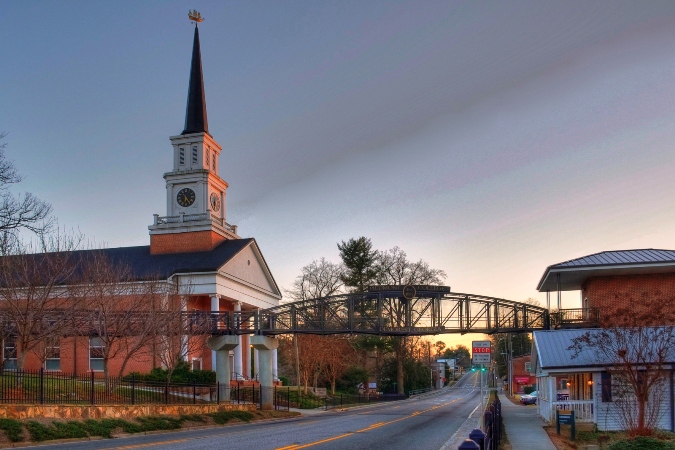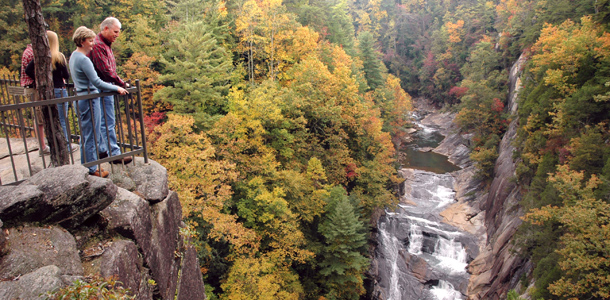About Habersham County
Named after Colonel Joseph Habersham, Habersham County sits at the foothills of the Blue Ridge Mountains in northeast Georgia. The trees of the Chattahoochee National Forest stand tall at the northern end of the county, while its southern end holds the majority of its population centers, including its commercial and industrial base.
 Habersham County's 48,000 residents enjoy a comfortable way of life year-round, and thousands of tourists visit each year to experience its unique quality of living. Springs and summers are filled with hometown festivals and exciting excursions to the mountains and rivers. Fall and winter are special seasons as thousands of tourists come to view the changing color of leaves and stay for the community's charm and hospitality.
Habersham County's 48,000 residents enjoy a comfortable way of life year-round, and thousands of tourists visit each year to experience its unique quality of living. Springs and summers are filled with hometown festivals and exciting excursions to the mountains and rivers. Fall and winter are special seasons as thousands of tourists come to view the changing color of leaves and stay for the community's charm and hospitality.
Habersham County's Number One industry is agriculture, with its major cash crops being peaches and apples and its major commodities being chicken and pork. The farm gate value of the county's agricultural resources is approximately $30 million per year, the 3rd highest in the state of Georgia.
Aside from agriculture, the major industries of Habersham County include Tourism, Metal Fabrication, Food Processing, Professional Services, and Healthcare. The county's two intersecting four-lane highways (US 441 and US 23) put it at the crossroads of commerce, and its low tax burden makes it easy to open and operate a business.
Listed below is a quick facts link about Habersham County from the U.S. Census Bureau.
Quick Facts Page
History
Habersham County was officially chartered in 1818 and named for Joseph Habersham, a Revolutionary War hero and the first Postmaster General under President John Quincy Adams. Coastal and deep-south residents traveled to the foothills of the Blue Ridge Mountains during the summer to escape the humidity and mosquitoes. Usually, these people stayed in the county until the first sign of frost. Many of these seasonal visitors liked the area so much that they eventually settled permanently.
Habersham County was enlarged in 1828 and 1829 when more Cherokee lands were added to it from the Cherokee Cessions of 1818 and 1819. At one time, it encompassed 713 square miles, but through the years, parts of it were taken to help form Banks, Cherokee, Lumpkin, Rabun, Stephens, and White counties, decreasing Habersham County to 278 square miles.
The first settlers claimed land along the banks of the county's four major rivers, the Chattahoochee, Soque, Tallulah, and Tugaloo. Once gold was discovered in the mountains, a new breed of prospectors and fortune hunters came to Georgia. Because of the extreme measures taken to retrieve the gold from the land, the National Forest was created to protect the land from timber depletion and soil erosion. Agriculture thrived, and two major products were marketed: apples and grapes for winemaking.
The introduction of the Tallulah Falls railroad expanded the county's marketability and brought more visitors to the area. Tallulah Falls became an increasingly popular spot for honeymooners, second only to Niagara Falls.

